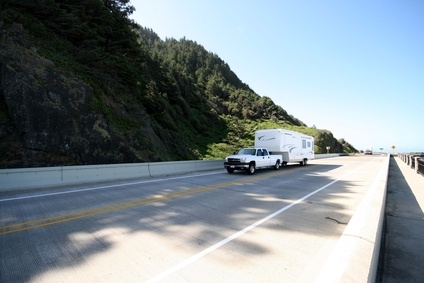
Outdoor activities are popular in Wisconsin, and the warmer months are often filled with camping, fishing, skiing and boating. Whether you are sleeping under the stars or setting out for one of Wisconsin's 15,000 lakes, you will likely need a trailer. And before you pull out of your driveway, you need to be sure that your trailer is street legal.
Wisconsin statutes require that any trailer have at least one red taillight, which must be visible from 500 feet at night. If the trailer was originally manufactured with two taillights, both lights must be working properly. Taillights cannot have decorative coverings that restrict the amount of visible light, unless the covering is part of the trailer's original factory design. Each taillight must be located at a height between 20 and 72 inches. Taillights must be wired in such a way that they turn on with the headlights or auxiliary driving lights.
In Wisconsin, all vehicles that require a registration plate must have a lamp to illuminate it. The light should be white, and allow it to be read legibly from 50 feet away in the dark. This light may be a part of the taillight or may be separate. Registration plate lights must also be wired in such a way that they turn on with the headlights or auxiliary driving lights.
All trailers must also have one brake light on the back. Like taillights, if the trailer was initially manufactured with two brake lights, both must be in working condition. Brake lights must be red or amber and, when viewed from the driver's seat of a following vehicle, must be visible from 300 feet during normal sunlight. The light must be operated from the driver's seat of the vehicle pulling the trailer and should light up when the vehicle's foot brake (or a separate trailer brake) is applied.
If your trailer was sold new after Jan. 1, 1968, it must have two directional signal lights on the rear. They must be at the same level and as far apart as possible. The lights must be red or amber and visible from 300 feet in normal sunlight. Like taillights, they must be unobstructed by decorative covers unless such covers are part of the factory design. However, you don't need directional lights on your trailer if the rear directional lights of the towing vehicle, when viewed from the driver's seat of a following vehicle, are visible from 300 feet in normal sunlight.